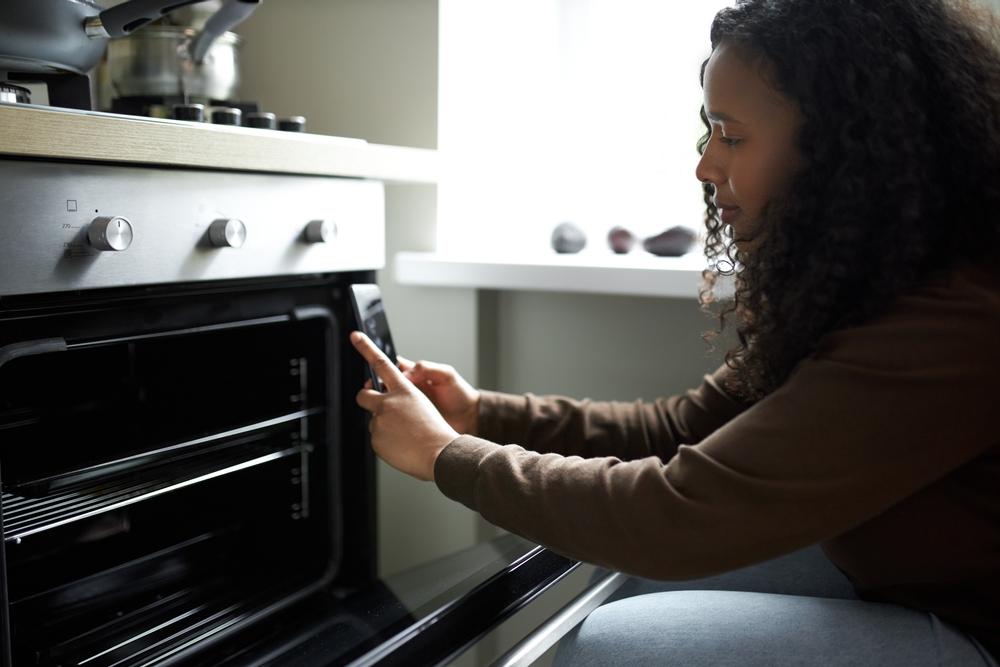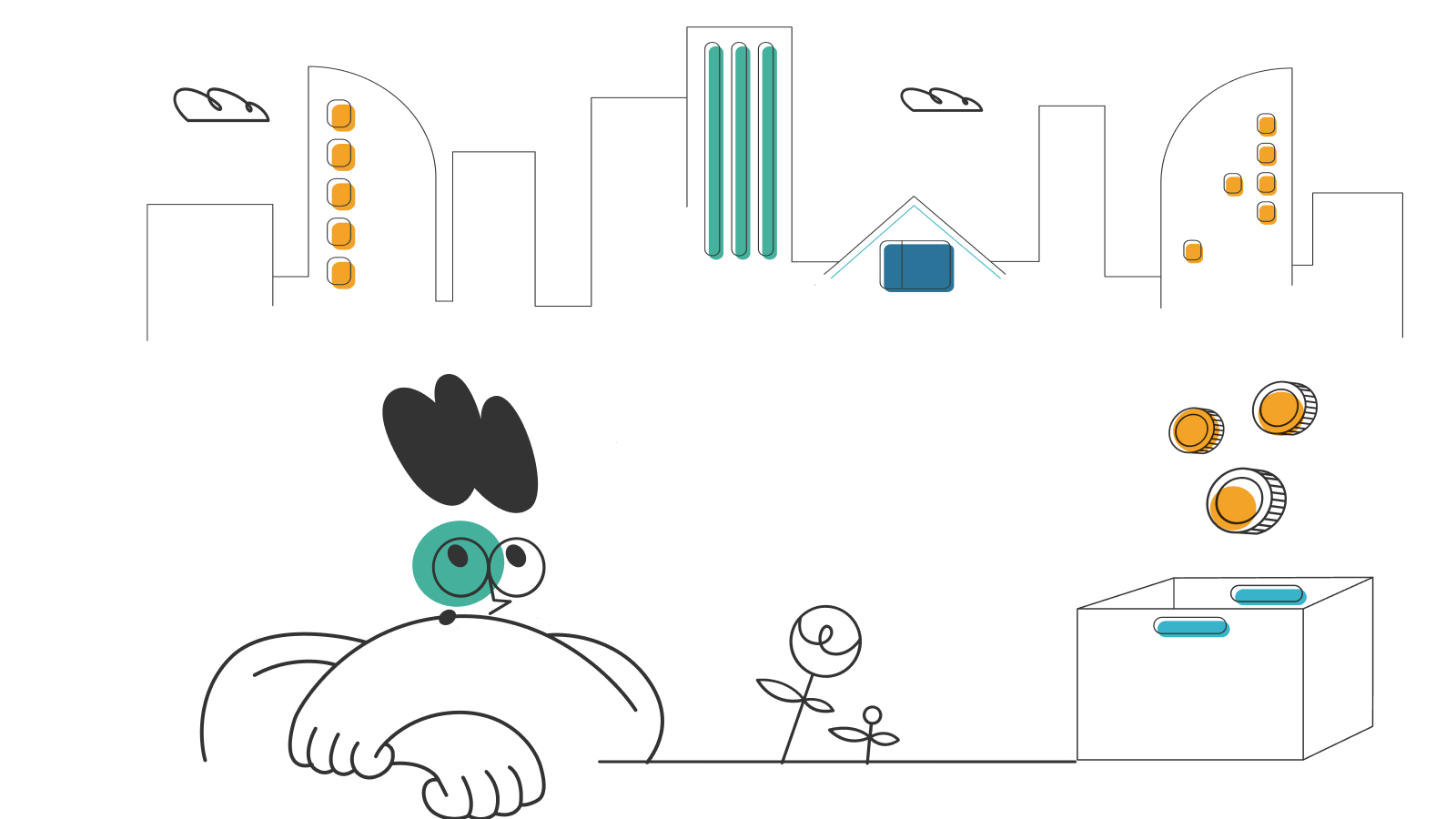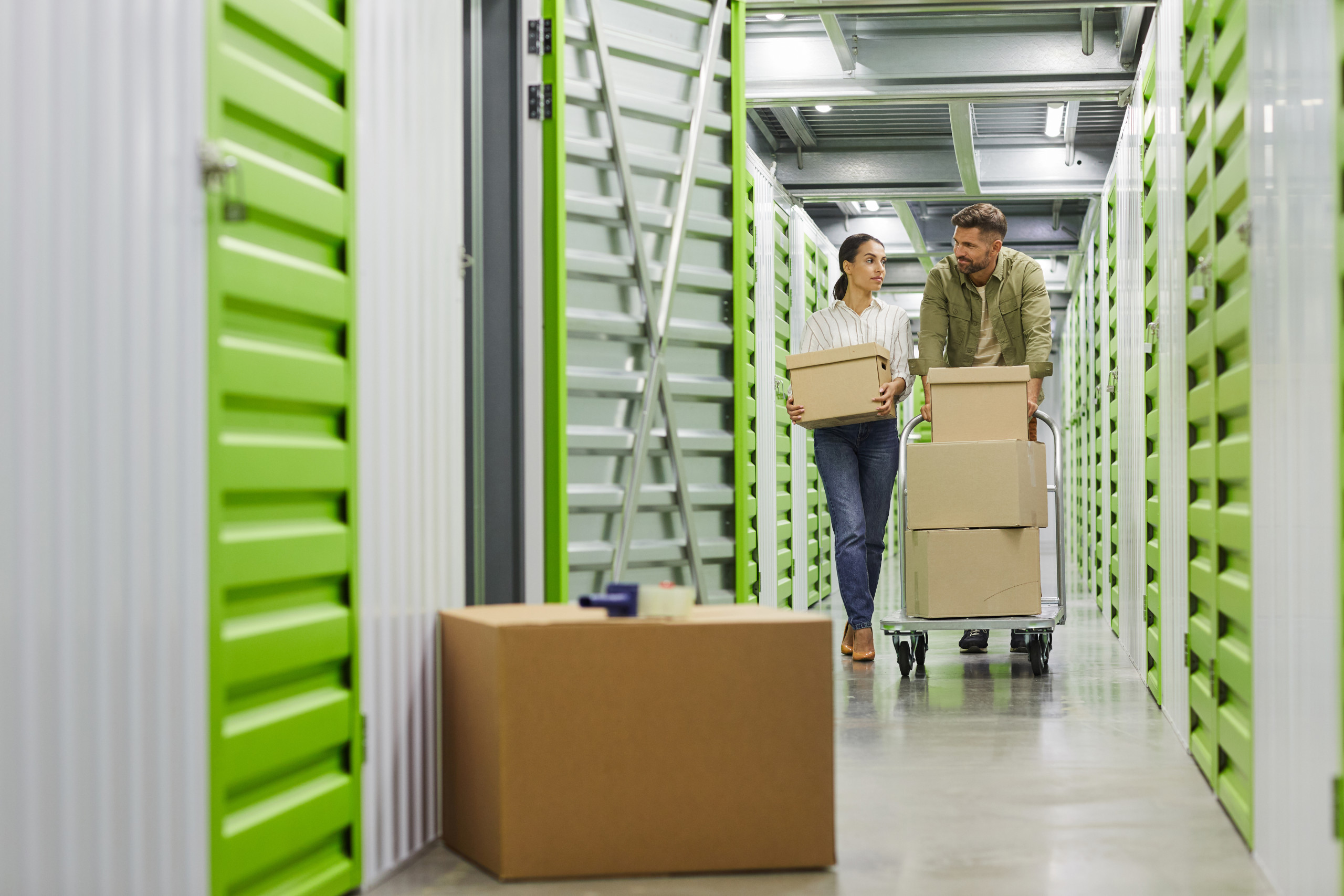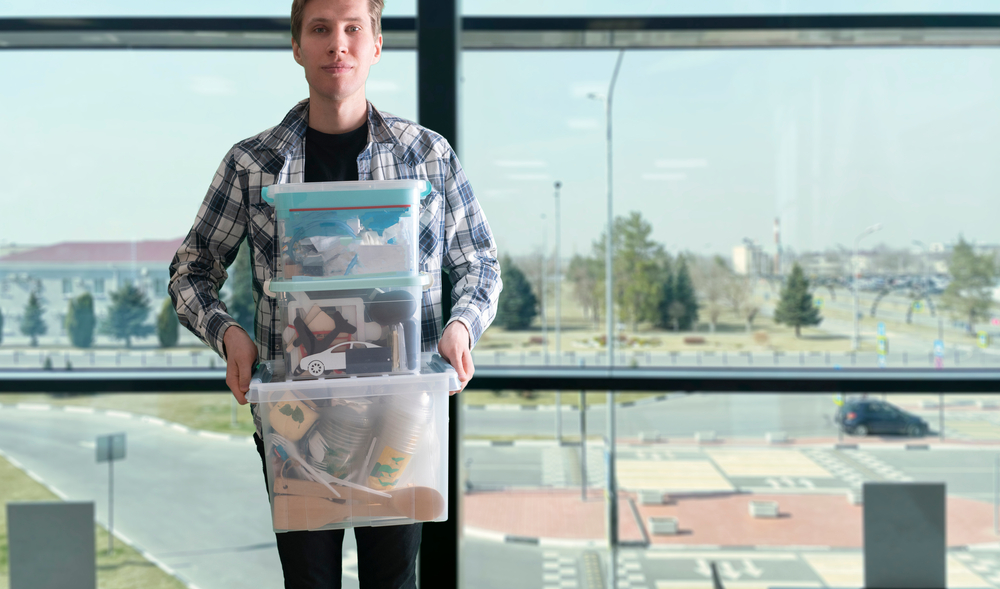Do It Yourself Moving: What You Need to Know

Moving soon? Get organized with our free moving checklist.
Do it yourself moving is not for the faint of heart, but it can save you a lot of money. The pressure of packing your glassware, choosing a rental truck, and asking friends for help can be overwhelming. But don’t fret! We have the advice you need to pack your belongings, load them up safely, and save on your do it yourself move without losing your mind (or your glassware).
Get Organized Early for a Do It Yourself Move
Moving can be stressful even with professional help, and do it yourself moving can be especially trying. To help minimize your stress, you’ll want to stay as organized as possible, so determine your moving budget, grab your moving checklist, and create a timeline before anything else.
Once you’ve determined the date of your do it yourself move , you can work backward and set deadlines for your tasks each week. As a general rule of thumb, start packing at least three weeks before you move. It might sound like a long time, but with everything else you have to do packing your out-of-season clothes is an easy place to start.
You will also want to think about some logistics well in advance. While you’re building your timeline, ask yourself the following questions:
- Do you need a moving permit?
- Will you be shipping your car, or do you know who’s driving it?
- Who can you reach out to for help moving?
- What moving equipment will you need for packing?
Try to answer each of these questions a few weeks before your DIY move so that you and your friends (or family) have plenty of time to prepare.

Pare Down Before a Do It Yourself Move
Do it yourself moving can be a tricky business and you definitely do not want to take more belongings with you than you need. Before you move, go through your belongings and get rid of the items you definitely either don’t need or don’t want. For clothing, you can generally say goodbye to an outfit if you haven’t worn it in over a year or if it no longer fits. Don’t torture yourself trying to make your clothes work, just let them go.
Once you’ve pared down your belongings, you can hold a garage sale or donate the items you don’t want to take to your new home. This will also be useful as you take stock of your items, decide what size of a moving truck you’ll require, and how many boxes you’ll need.
Choose Your Moving Boxes for Do It Yourself Moving
Thought all boxes were created equal? Think again! There are a few different options for moving boxes, with the most popular being recycled, plastic, or brand new. They each have their own advantages, disadvantages, and price points.
Recycled
The cheapest option, recycled moving boxes are an eco-friendly choice for the budget-conscious do it yourself mover. You can find free recycled boxes from local stores, friends, and Craigslist. If you have a little cash to spare, it can be worth purchasing recycled boxes to ensure they are in good shape. Some companies sell used boxes, starting at $0.52 per box, while others sell boxes made of recycled materials. Shop around to find the best option for you and your budget.
Plastic
Another win for Mother Nature are plastic moving bins which are available to rent from various companies across the country. They are a great option if you want to avoid the cardboard altogether (no tape or papercuts here), and also want the convenience of door-to-door service. Most companies offer to drop off and pick up the plastic bins for you, so you can focus on the rest of your do it yourself move. They usually come in only a few sizes, so keep that in mind when making your decision. As for pricing, at an average of $0.26 a day, plastic boxes are relatively budget-friendly.
Brand New
These boxes start at $1 each and can be purchased individually or in kits. Each kit contains an assortment of boxes based on room type and home size, so the more bedrooms you have, for example, the more wardrobe boxes you’ll get in your kit. If you’re worried about the structure of your boxes, and plastic bins are not an option in your area, you might want to go for brand new boxes. Whichever type of box you go with, make sure that you know what you’re packing before you order anything.
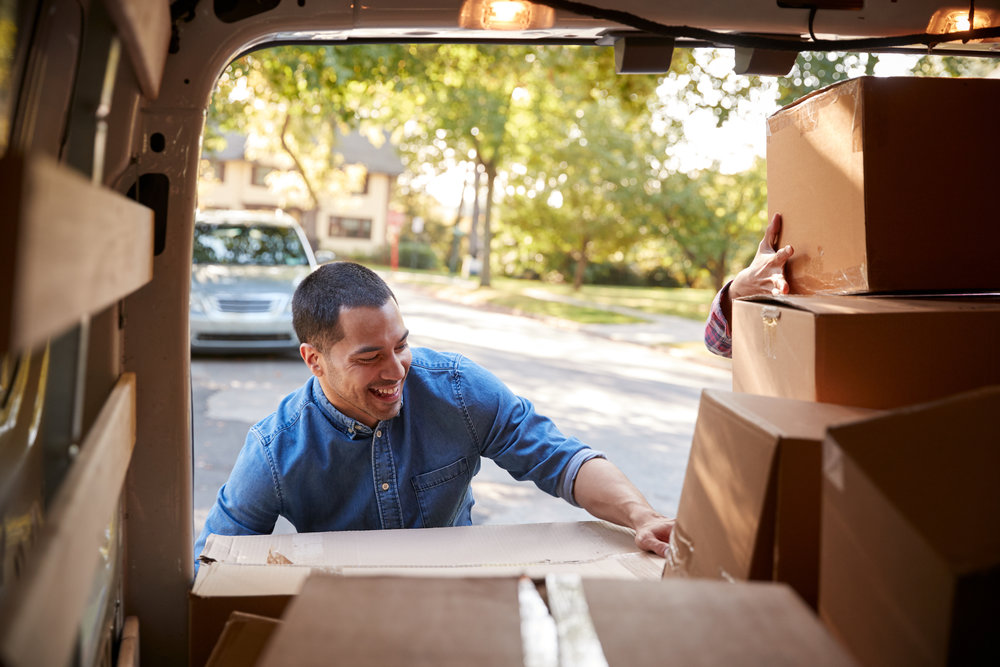
Know Your Options for Do It Yourself Moving
When it comes time to move your things, consider all of your transportation options. Depending on how much you decide to bring to your new home, you could choose to rent a moving truck, trailer, container, or finagle everything into your own vehicle. Here are pros and cons for each option.
Personal vehicle
This is clearly the most flexible and least expensive option. Before you forgo the rental, there is one big element to consider: space. Unless you have very few belongings or an an extremely oversized car, you better be prepared to take your time and strategize. Tetris skills come in handy here. That said you can maximize your space by packing bags instead of boxes and squeezing smaller items under seats. A Tetris wiz and minimalist? DIY moving with your own car could be the best option for you.
Rented moving truck or trailer
Renting a moving truck or trailer is a great option for do it yourself moving. You save money packing your belongings yourself while also gaining a spacious vehicle to transport everything. Trucks and trailers are typically priced per hour and by the mile. They also come in different sizes – from 10 to 26 feet long – so you may want to use a calculator to estimate which size you should rent. As a general rule of thumb, it’s always better to have a little more space than not enough, so when it comes time to book your moving truck or trailer, be sure to book slightly more truck than you’ll need.
As for pricing, renting a truck or trailer for do it yourself moving will set you back anywhere from $20 to $3,000 depending on the duration of your rental, the size of the vehicle, and the distance of your move. You may also have to fill up on the way, so be sure to leave room in your budget for gas. Then there’s the part where you (or a good friend) drives the rental. Driving a truck or trailer for the first time can be challenging, so take some time to test it out before getting on the road to your new home. Test the lights, the brakes, and what it’s like to turn the vehicle. You don’t want any surprises on the way.
Dolly is a recommended moving service with professionals who provide flexible help with your move. See how Dolly can help your move here.
Moving container
If you want a hybrid do it yourself move, renting a moving container is your best option. You decide which size container you want to rent and the length of time you need it for, and the then the company drops it off, picks its up from your old home, delivers it to your new home, and then picks it up when you’re done unpacking. Don’t mind the lifting but hate the driving part of do it yourself moving? Go for the moving container.
Given the extra drop-off and delivery services, renting a moving container is not the cheapest option. On average, it costs around $500 to $5,000 to move using a moving container. Pricing is dependent upon the distance of the move, how many containers you rent, and their size.
Ask Your Friends for Help
Are you moving across the country or just down the street? Either way, when choosing to do it yourself move, the more help you have the better. Whether it’s moving the sofa, disassembling the dining table, or blowing off steam, you’ll be thankful for your friends on moving day. There’s no harm in asking, as they say, and your friends do not have to say yes. If you throw in some pizza (and beer?) for good measure, you can turn the day into an active hang-out session. Be sure to give them plenty of time to prepare and check their schedules so you have an accurate headcount for the day.
Remember to thank your friends for helping with your DIY move. Thanking them on the day with food and water goes without saying but if you want to go the extra mile, consider going old school and sending a card. It’s an easy way to share your new address and show your appreciation. Helping you move is certainly worth the extra thanks.
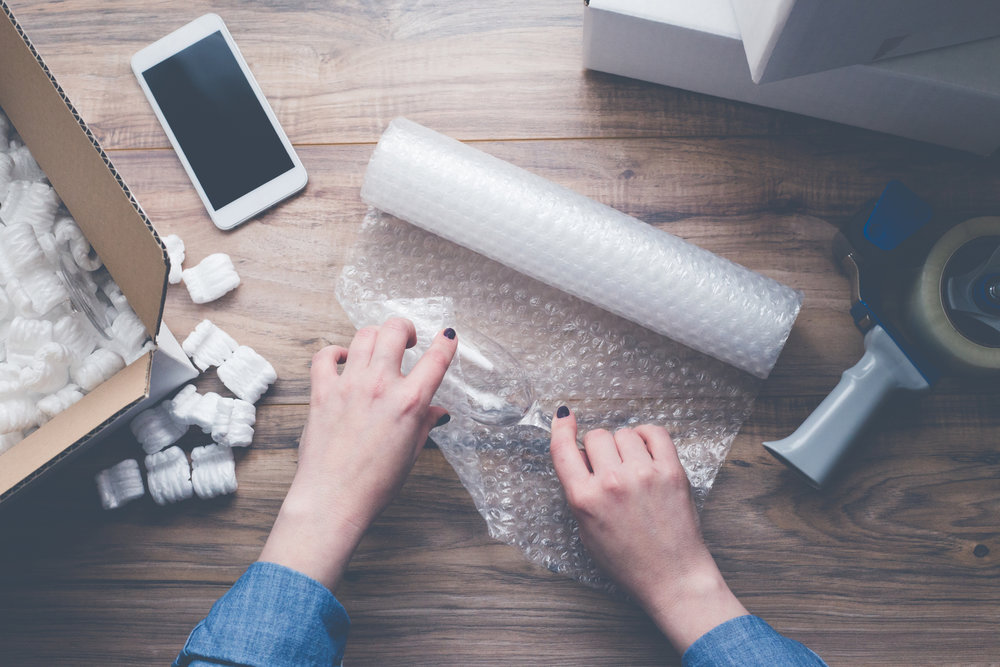
Pack Like a Pro
Pack your open first box
Before you dive into the packing and start to box up all of your belongings, pack your “open first” box. This will contain everything you’ll need to get through the first few days in your new home. Items like shampoo, sheets, and paper towels should all be in the box (or boxes) you open first. Make sure you know where this box is so that you have easy access to it when you get to your new home.
Pack smart
It might be tempting to rush the packing process and just toss everything into boxes. But trust us, it’s worth putting the extra time into packing well. Getting creative and staying organized will make a difference when you’re unpacking. You can use buttons and sandwich bags to pack your jewelry, clean socks to pack your glassware, and you can take pictures of your electronics before unplugging them.
Most people leave their kitchen as the last room to pack. As for food, use smaller boxes for canned goods, and plastic wrap for open containers. It will keep your boxes light and your food contained. And of course, for when you get to your new home, make sure you have everything a new kitchen might possibly need.
Use labels
It might sound obvious but labeling your boxes properly will save you a lot of time and extra lifting during a do it yourself move. To get the most out of your efforts, try using different colored stickers for different rooms and brief summaries of what’s in each box. This way, you won’t need to examine each box as you unload them.
Maximize your moving truck
As a general rule, keep your heaviest items (think the refrigerator and washing machine) near the front of your moving truck. In the middle, line the sides with cushioned items like your mattress, box spring, and sofa. Anything that has some softness to it can be used to protect the innermost section of your moving truck.
This center spot should hold other heavy items and boxes that aren’t as heavy as those in the front of your truck. Keep loading the larger, heavier boxes and items down the center of your truck and along the back in an “I” formation. Load the lightest, smallest boxes last and use them to fill any gaps around the heavier items. Finally, keep important documents and other items you can’t load onto a moving truck with you or a friend for safekeeping during your do it yourself move.
Lifting heavy items carefully
Do it yourself moving is not the time to prove your strength. Given how repetitive it is, you could easily pull a muscle, or throw your back out. Be sure to give your legs the workout instead and lift from a deep squat.
We know that moving can be stressful. Do it yourself moving adds an extra layer of stress, but we have confidence in you! With a little (maybe a lot) of planning and this guide to stay organized, your DIY move will go off without a hitch.




